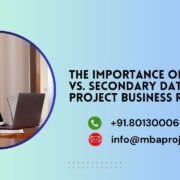How to Get Published-Turning Your MBA Dissertation into a Research Paper
How to Get Published: Turning Your MBA Dissertation into a Research Paper
Introduction
How to Get Published-Turning Your MBA Dissertation into a Research Paper. Turning an MBA dissertation into a research paper is a strategic step toward academic publishing and professional recognition. Many MBA students invest months in researching and compiling their dissertations, but only a few take the next step to refine their work for publication. A well-structured, peer-reviewed research paper enhances credibility, expands career prospects, and contributes to the broader academic and business community. In this article, we provide a comprehensive guide on how to transform your dissertation into a publishable research paper that meets the highest academic standards.
1. Understanding the Differences Between a Dissertation and a Research Paper
Before revising your dissertation, it is essential to understand the key differences between a dissertation and a research paper:
- Length: A dissertation is a lengthy document, while research papers are typically much shorter (5,000–8,000 words, depending on the journal’s guidelines).
- Audience: Dissertations are written for examiners, while research papers target journal readers, scholars, and practitioners.
- Structure: Dissertations follow institutional formats, whereas research papers adhere to journal-specific structures, including abstract, introduction, literature review, methodology, results, discussion, and conclusion.
- Focus: Research papers emphasize concise arguments and significant findings, often requiring a sharper focus than a dissertation.
2. Selecting the Right Journal for Publication
Choosing the appropriate academic journal is critical for increasing your paper’s acceptance chances. Consider the following factors:
- Relevance: Ensure the journal aligns with your research domain (e.g., marketing, finance, management, entrepreneurship).
- Impact Factor: Higher-ranked journals have greater credibility and readership.
- Open Access vs. Subscription-Based: Decide whether you want a broader audience with open access or a more specialized readership through subscription-based journals.
- Publication Guidelines: Each journal has specific formatting, length, and referencing requirements.
Useful journal directories include Scopus, Web of Science, and Google Scholar.
3. Refining Your Dissertation for a Research Paper
a) Condense the Content
A dissertation may exceed 20,000 words, but most research papers require a concise format. To refine your work:
- Focus on a single research question or hypothesis.
- Summarize extensive literature reviews into a few paragraphs, emphasizing recent and relevant studies.
- Highlight key findings and eliminate redundant sections.
b) Strengthen the Abstract and Introduction
The abstract should clearly summarize the research problem, methodology, key findings, and implications in 200–250 words. The introduction should address:
- The research problem
- The importance of the study
- The gap in existing literature
- The study’s objectives and expected contributions
c) Revise the Literature Review
Instead of a comprehensive literature review, focus on critical studies that establish the research gap. Ensure your citations are current and relevant, preferably within the past five years.
d) Improve the Methodology Section
Journals expect precise and transparent methodology descriptions. Key aspects include:
- Research design (qualitative, quantitative, or mixed-methods)
- Data collection techniques
- Sample size and demographics
- Data analysis techniques (statistical tools, software, or qualitative frameworks)
e) Focus on Results and Discussion
- Present concise findings with visual representations (tables, graphs, or figures).
- Compare your findings with existing literature.
- Discuss theoretical and practical implications.
- Address limitations and future research directions.
f) Strengthen the Conclusion
A strong conclusion should:
- Summarize key findings concisely.
- Emphasize contributions to academia and industry.
- Offer recommendations for future research.
4. Formatting and Citations
Adhere to the selected journal’s referencing style (APA, Harvard, Chicago, or MLA). Proper citation ensures academic integrity and enhances credibility. Use reference management tools such as EndNote, Mendeley, or Zotero to format citations correctly.
5. Proofreading and Editing
Before submission, ensure your paper is free of grammatical errors, typos, and inconsistencies. Consider:
- Hiring a professional editor or proofreader.
- Using tools like Grammarly, Hemingway Editor, or Turnitin for plagiarism checks.
- Seeking feedback from professors, colleagues, or research groups.
6. Submission and Peer Review Process
Once your paper is finalized, follow the journal’s submission guidelines. The peer-review process generally involves:
- Initial Editorial Review: The journal editor assesses your paper’s relevance and adherence to guidelines.
- Peer Review: Experts evaluate the paper’s originality, methodology, and significance.
- Revision and Resubmission: Address reviewers’ comments and improve your paper.
- Acceptance and Publication: Once approved, your paper is published in the journal.
7. Promoting Your Published Research
After publication, increase your research impact by:
- Sharing the paper on academic platforms (ResearchGate, SSRN, Google Scholar).
- Presenting findings at conferences and seminars.
- Promoting it through LinkedIn, Twitter, and academic blogs.
- Including the publication in your resume and professional portfolio.
Conclusion
Transforming an MBA dissertation into a research paper requires strategic revision, journal selection, meticulous formatting, and persistence throughout the peer-review process. By following these steps, you enhance the likelihood of academic recognition, career growth, and contribution to the business research community.
Thank you for reading our Blog “How to Get Published-Turning Your MBA Dissertation into a Research Paper”.
Also, read our more BLOG here.
For Order “MBA Projects” feel free to contact us at Mob: Call / WhatsApp: +91.8013000664 || Email: info@mbaprojects.net.in








